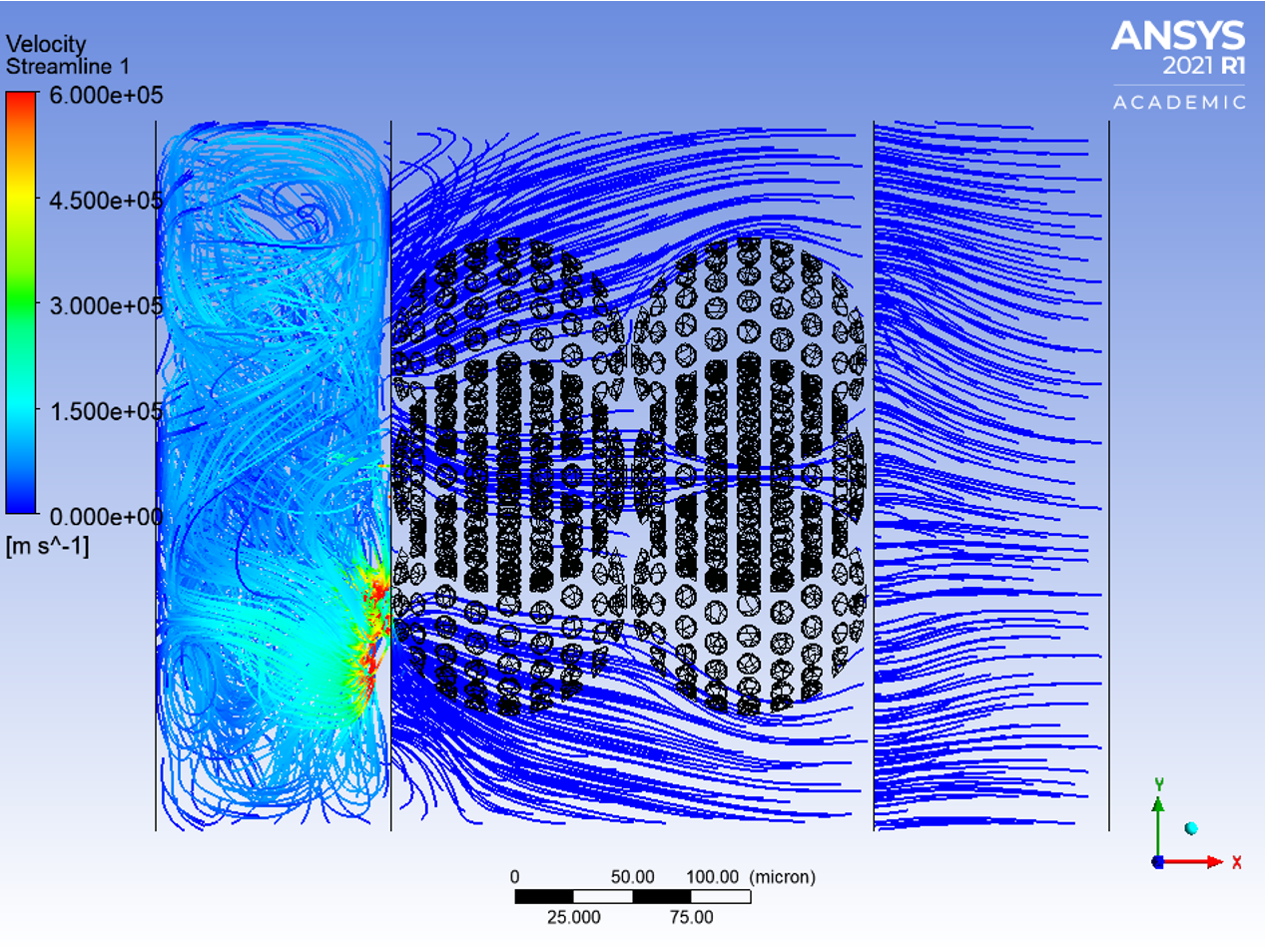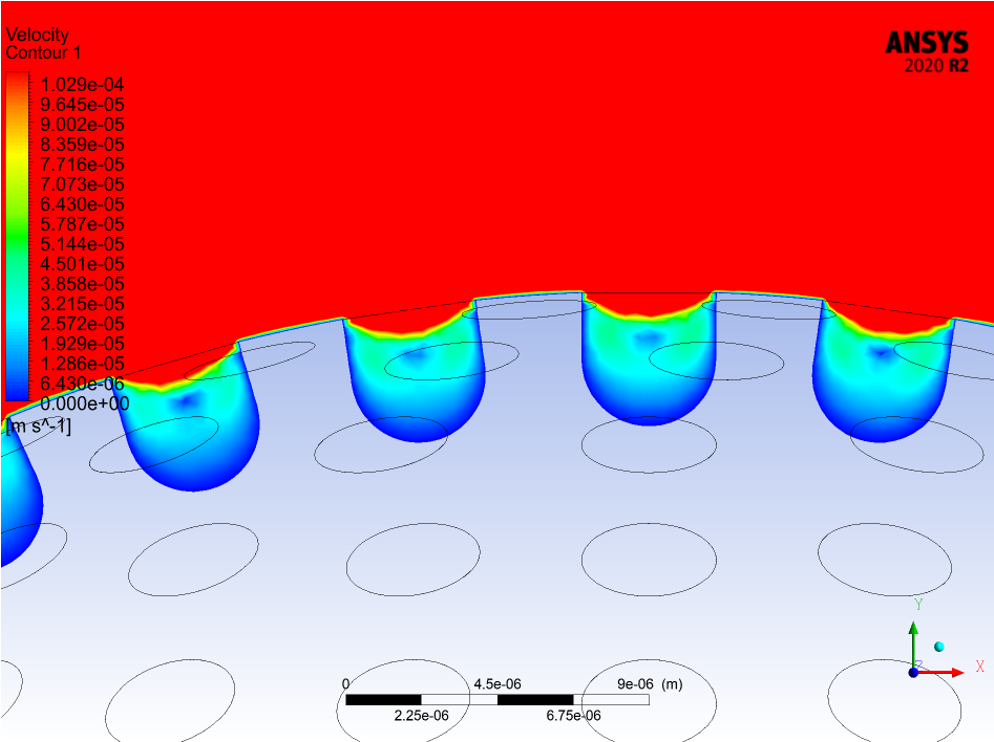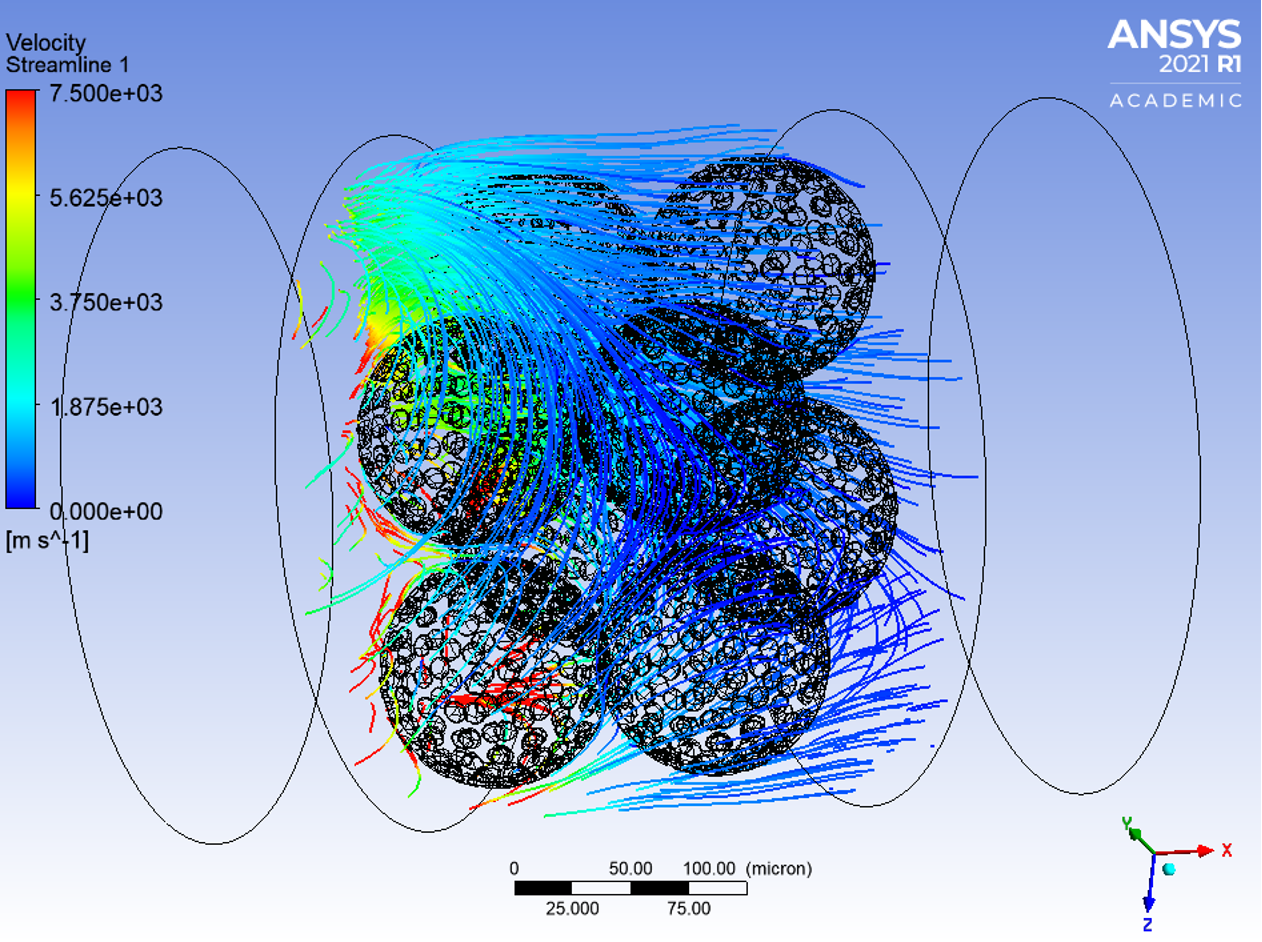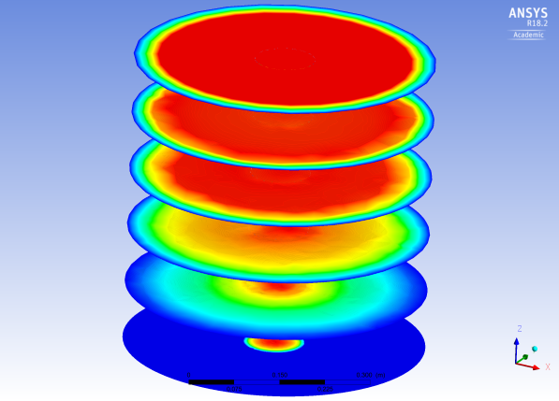Investigation of Fluid Penetration in Porous Enzyme Immobilizing Scaffolds
Enzyme immobilization is the confinement of enzymes onto a support by physical or chemical means and can be utilized in catalytic reactions to increase enzyme to substrate ratios, increase enzyme recovery, and to improve process control. Enzyme immobilization is used in packed bed reactors (PBRs), a common chemical reactor which consists of a tube or pipe packed with adsorbents or catalyst particles. The packing material’s size and shape determines the surface area and void area between the packing. The void area, also referred to as void fraction and porosity, affects the diffusivity in the packed bed through inertial and viscous resistances. Diffusivity is a particularly important in diffusion-limited catalytic reactions, where the rate limiting step of the reaction is the diffusion of substrate in or out of the active site of the enzyme. Achieving optimal diffusion is crucial to the efficiency of reaction and conversion rate. A packing material’s surface area can be increased by the attachment of nanoparticles onto the surface of the packing material, also referred to as a scaffold. The nanoparticles act as “etching” on the scaffold which increases the surface area onto which enzymes can be immobilized. The diffusivity around the scaffolds change with surface deviations. To investigate the effects, Computational Fluid Dynamics (CFD) can be utilized. CFD is used to model properties of fluid flow in physical systems, such as velocity profiles, streamlines, and pressure contours. Steady state simulations of fluid flow around a singular dimpled scaffold with a nanoparticle coating were run to analyze flow and diffusion of fluid around the scaffold and in the coating.



Drug Delivery
Medicine and biomedical technologies are a crucial component in today’s society. Some technologies directly impact responses to diseases like vaccines while others help provide quantitative and qualitative ways to understand neurological process like magnetic resonance imaging (MRI). One growing industry in the Biotechnology Sector is small-molecule drug and biopharmaceutical drug development. Work in this field begins with finding specific compounds or proteins that interact with different aspects of the body. These are then synthesized or grown depending on how produces the product. Optimization of a drug’s delivery method into the body is crucial as the delivery method should provide the fastest and most efficient treatment. One way to optimize the drug delivery method is to run numerical calculations on the effectiveness of each method via numerical simulations.

